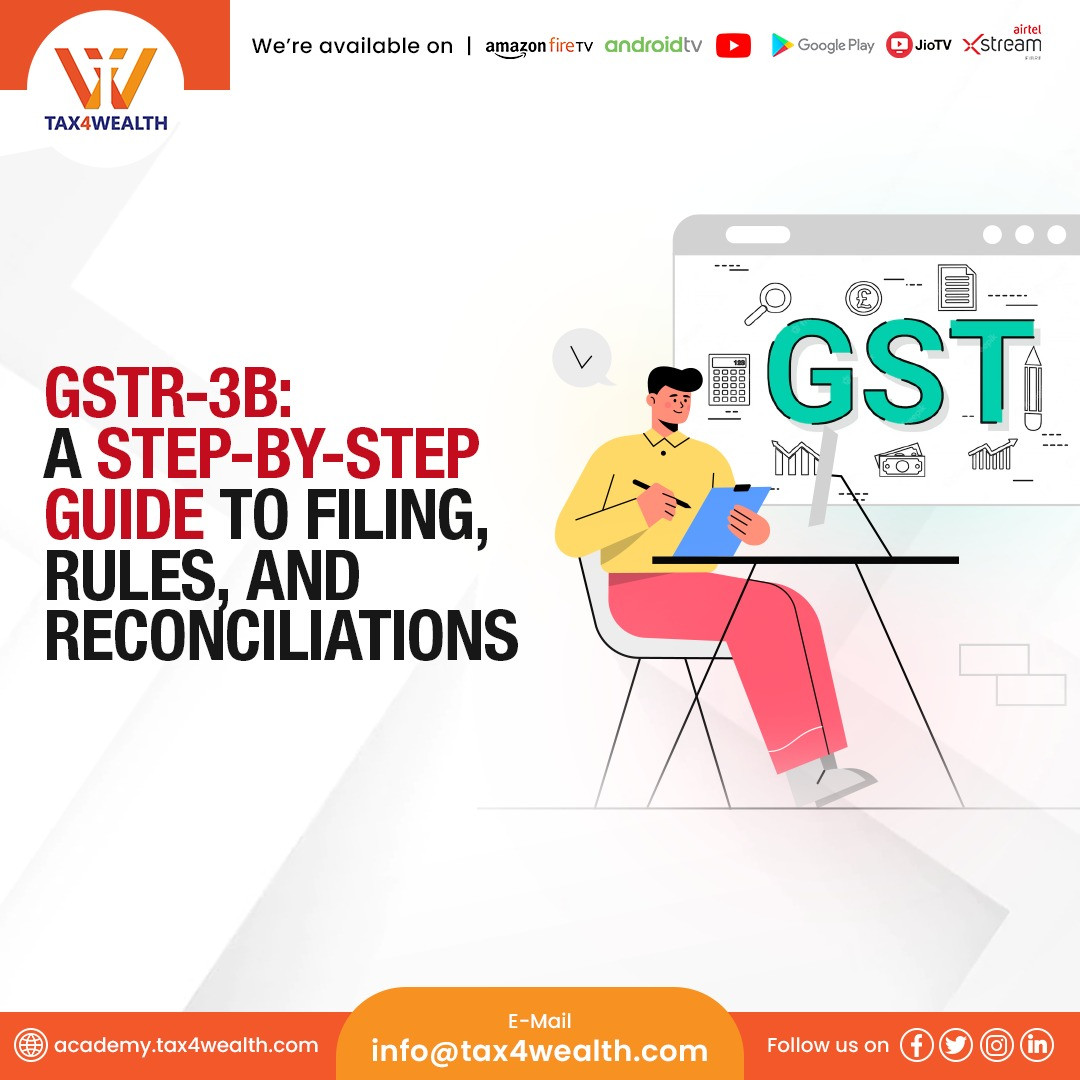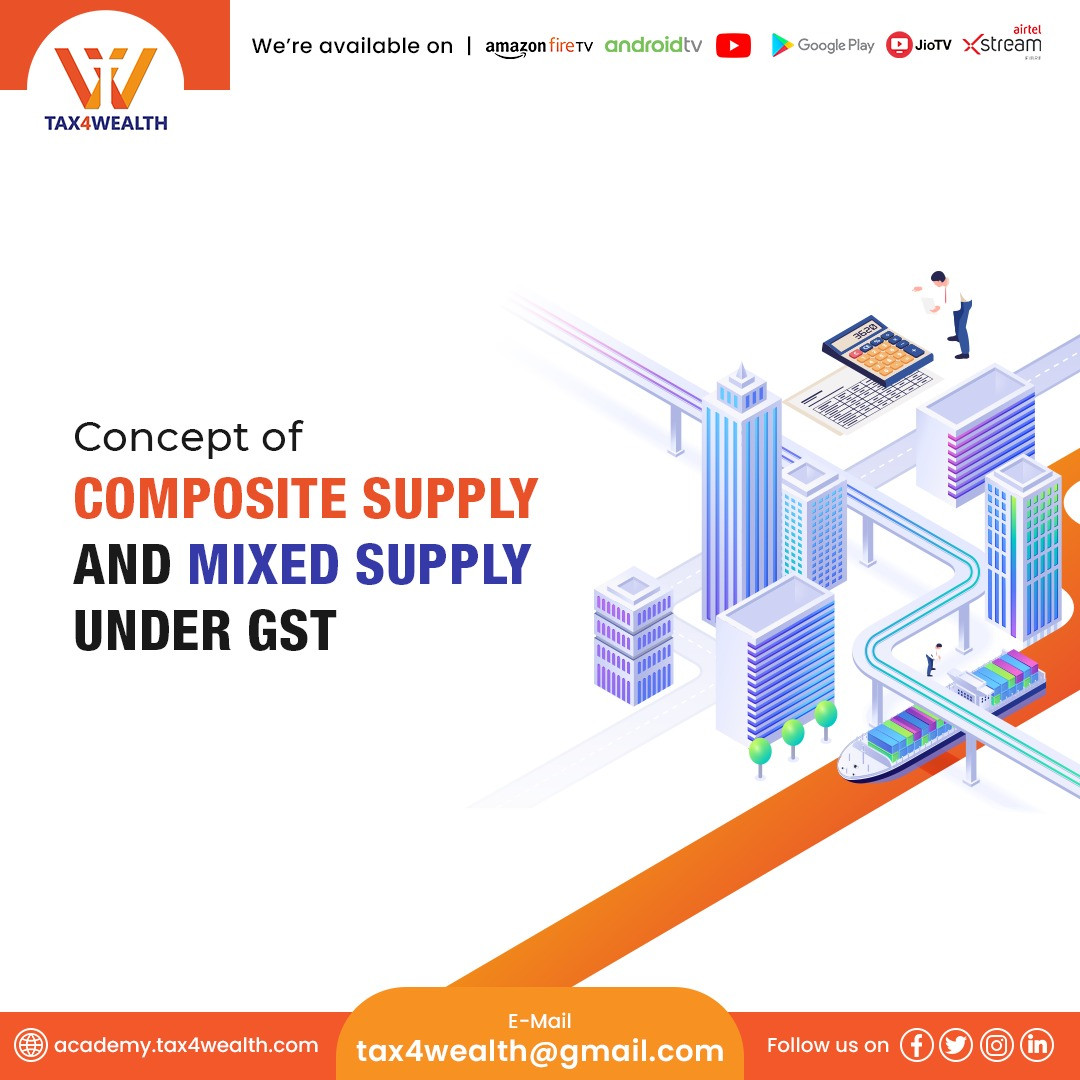
GSTR-3B: A Step-by-Step Guide to Filing, Rules, and Reconciliations
The Goods and Services Tax (GST) has revolutionized the Indian taxation system, unifying multiple indirect taxes into a single comprehensive tax. One of the key components of the GST regime is the GSTR-3B form. It is a self-declaration summary return that businesses need to file monthly, providing details of their inward and outward supplies and tax liabilities. In this blog, we will provide a step-by-step guide to filing GSTR-3B, explain the rules associated with it, and discuss the importance of reconciliations.
1. What is GSTR-3B return?
GSTR-3B is a monthly summary return form under the GST system in India. It is designed to simplify the tax filing process for registered taxpayers. GSTR-3B acts as a temporary substitute for GSTR-3, which was initially proposed as the main return form but was later put on hold.
GSTR-3B serves as a summary statement of a taxpayer's outward supplies, inward supplies are liable to reverse charge, input tax credits claimed, and tax liability for a particular tax period. It provides a consolidated view of a business's GST transactions, allowing taxpayers to report their tax liabilities and claim input tax credits.
The purpose of GSTR-3B is to bridge the gap between the outward supplies (reported in GSTR-1) and the inward supplies (auto-populated from GSTR-2A). It enables businesses to report their tax liabilities and avail of input tax credits without waiting for a complete reconciliation between these two forms.
2. The Key features of GSTR-3B:
- GSTR-3B offers a simplified format compared to other GST return forms. It consolidates various details required for tax reporting into a single form, reducing the compliance burden for taxpayers.
- GSTR-3B is filed on a monthly basis by registered regular taxpayers, regardless of their turnover. It ensures regular reporting of tax liabilities and input tax credits to the tax authorities.
- GSTR-3B was introduced as a temporary return form until the complete GST return system was implemented. However, it has been continued as an ongoing requirement for businesses.
- GSTR-3B is a self-declaration return, which means taxpayers need to assess and declare their tax liabilities and input tax credits accurately based on the available information. It does not require invoice-level reporting.
- Taxpayers can claim input tax credits in GSTR-3B and adjust them against their output tax liabilities. The form allows for the seamless utilization of input tax credits for reducing the overall tax liability.
It is important for businesses to file GSTR-3B within the specified due dates to avoid penalties and stay compliant with GST regulations. The information provided in GSTR-3B is crucial for the government to assess tax liabilities, facilitate input tax credit reconciliation, and ensure smooth tax administration under the GST system.
3. What are the steps for filing the return GSTR-3B?
Step 1: Gather the necessary information
Before diving into the process of Filing GSTR-3B, ensure that you have all the required information at hand. This includes invoices for both inward and outward supplies, details of input tax credit (ITC), and any other relevant documents.
Step 2: Log in to the GST portal
To file GSTR-3B, log in to the GST portal using your credentials. Navigate to the Returns Dashboard and select the relevant financial year and tax period.
Step 3: Declare outward supplies
In this section, you need to provide the details of your outward supplies. This includes taxable supplies to registered and unregistered persons, exports, and supplies liable for reverse charge. Enter the total value of supplies made under different tax rates and compute the tax liability accordingly.
Step 4: Declare inward supplies liable for reverse charge
If you have received any supplies on which a reverse charge is applicable, enter the details in this section. This typically includes purchases made from unregistered suppliers and specific goods or services as notified by the government.
Step 5: Compute and declare the tax liability
Based on the details provided in the previous steps, the GST portal will automatically compute your tax liability. Verify the calculated values and make any necessary adjustments. Ensure that you have correctly applied the relevant tax rates to avoid any discrepancies.
Step 6: Claim input tax credit (ITC)
The ITC section of GSTR-3B allows you to claim the input tax credit for the tax paid on your purchases. Carefully enter the eligible ITC amount under various heads such as IGST, CGST, SGST and UTGST. Ensure that the ITC claimed is supported by valid invoices and complies with the rules laid down by the GST law.
Step 7: Pay the tax liability
After calculating the tax liability and adjusting the ITC, you will arrive at the final tax payable. Pay the amount due through the online payment modes available on the GST portal. Remember to adhere to the due dates to avoid any penalties or interest.
Step 8: File and submit GSTR-3B
Review all the information entered in the previous steps to ensure accuracy. Once satisfied, submit the GSTR-3B form on the GST portal. After submission, a unique reference number is Acquirer Reference Number (ARN) will be generated as proof of filing.
4. The Rules and Regulations regarding the filing of GSTR-3B return:
While filing GSTR-3B, businesses must adhere to certain rules and regulations to ensure compliance. Here are a few key aspects to consider:
- GSTR-3B must be filed by the 20th of the following month for which it is being filed. Failing to meet this deadline may attract penalties.
- It is crucial to provide accurate and complete details in GSTR-3B. Any incorrect or false information may lead to complications during audits or assessments.
- GSTR-3B must be reconciled with GSTR-1 (outward supplies) and GSTR-2A (inward
- supplies) to identify and rectify any discrepancies.
- Maintenance of records: Businesses must maintain proper records of invoices, documents, and other relevant information to support the details furnished in GSTR-3B.
5. Why are Reconciliations important?
Reconciling GSTR-3B with other GST returns and documents is crucial to ensure the accuracy and integrity of the data submitted. It helps in identifying any mismatches or errors, minimizing the risk of non-compliance. Some key reconciliations to be performed are:
1. Reconciliation with GSTR-1
Compare the outward supply details furnished in GSTR-3B with the information provided in GSTR-1. This helps identify discrepancies in the reported sales and enables rectification.
2. Reconciliation with GSTR-2A
Match the ITC claimed in GSTR-3B with the corresponding purchases available in GSTR-2A. This ensures that the ITC claim is valid and avoids any potential mismatches.
3. Reconciliation of taxes
Cross-verify the tax liabilities declared in GSTR-3B with the payment made for those liabilities. This helps in identifying any short or excess payments and facilitates accurate reporting.
Conclusion:
GSTR-3B is an essential monthly return that businesses need to file under the GST regime. By following the step-by-step guide outlined in this blog, businesses can ensure a smooth and accurate filing process. Adhering to the rules and regulations associated with GSTR-3B, along with performing reconciliations, plays a vital role in maintaining compliance and avoiding any penalties or disputes.
For more updates, Visit us at: https://academy.tax4wealth.com/
Related News
No comments yet, Be the first to comment.













